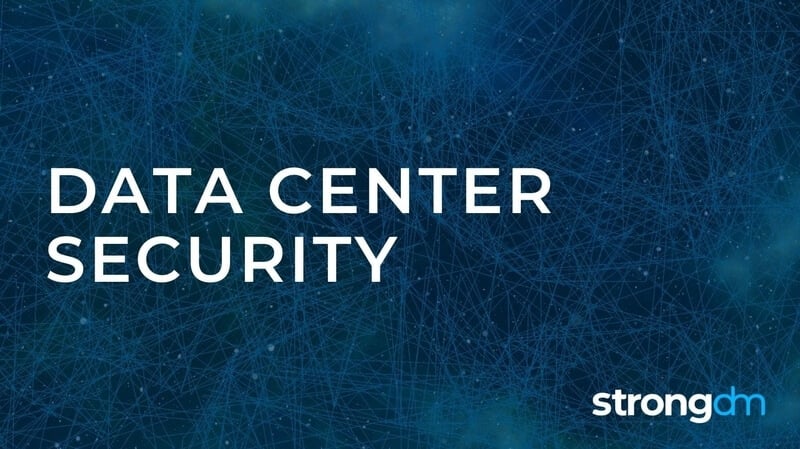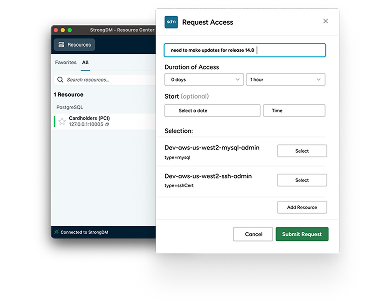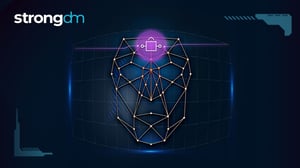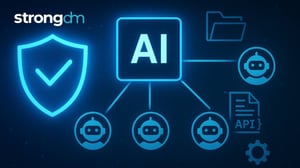

Written by
Brian JohnsonLast updated on:
April 8, 2025Reading time:
Contents
Built for Security. Loved by Devs.
- Free Trial — No Credit Card Needed
- Full Access to All Features
- Trusted by the Fortune 100, early startups, and everyone in between
Data center security refers to the protection of data centers against threats such as cyber-attacks, natural disasters, and human error.
The number of data centers has increased significantly over the last decade, and so has the amount of security-related disasters. In 2022, the global data center market size grew to $215.8 billion and is projected to reach $288.3 billion by 2027, according to Arizton Advisory and Intelligence. This growth is largely driven by the increasing demand for cloud computing, mobile devices, big data analytics, and IoT (Internet of Things).
This post will provide four tips to improve data center security by answering the following questions:
- How do I know what rules and regulations I need to follow when protecting my data and data center?
- Where should I host my secure data center infrastructure (on-prem vs. colocation facilities vs. cloud vs. hybrid solution)?
- How do I plan for and recover from a physical data center failure?
For most businesses, the security and availability of data are paramount. As demonstrated by the 2019 Wells Fargo service outage, customers can lose faith when the information they need is not accessible, and the security of that information is in question. To ensure that your data is handled with proper confidentiality, integrity, and availability, consider these tips:
Know the rules you need to follow
A good first step in handling data is understanding if your organization is subject to any specific security and/or privacy laws. Some examples include:
- HIPAA (Health Insurance Portability and Accountability Act) is focused on the proper handling, transmission and storage of protected health information (PHI).
- FedRAMP (Federal Risk and Authorization Management Program) is an assessment and authorization process that US federal agencies use to determine that sufficient security measures are in place when accessing cloud-hosted software and services.
- PCI-DSS (Payment Card Industry Data Security Standard) is a standard to protect cardholder data and reduce fraud, and all organizations handling credit cards must adhere to it.
Choose the right home for your data
When it comes to setting up a data center, you have some important questions to ask. Should you host your data locally on your own IT infrastructure, in the cloud, or some combination of the two (i.e., a hybrid cloud)? There are three primary types of data centers, each with its unique set of physical security and network security challenges:
- Self-hosted
The self-hosted model is traditionally more expensive, and it puts all the burden on you to make sure that data is available, secured, and backed up properly. These responsibilities could include the installation of an intrusion prevention device and other cybersecurity systems. You are also in charge of implementing control systems such as camera systems (like CCTV and NVR security systems) for capturing suspicious activities. Additionally, you are solely responsible for disaster planning so you can recover from a natural disaster if necessary. - Cloud hosted
In the cloud-hosted model, you shift much of your data and services responsibilities to a third party. While there are financial advantages to this type of configuration, cloud service providers are typically focused on uptime - you can't simply assume the provider will properly handle infrastructure security responsibilities as well. - Co-located/hybrid
This model uses some blend of on-premise, co-located, and/or cloud-hosted software and hardware to provide services.
Carefully consider the pros and cons of each option before deciding the right fit for your business. In general, smaller businesses tend to host their data in the cloud to reduce overall costs.
Implement security best practices
Regardless of what mix of on-prem and cloud services you use, you need to figure out who is responsible for securing your data. A good place to start is creating a data center security policy, which details the measures you put in place to prevent unauthorized access to your company's data centers and equipment. This policy includes security requirements such as:
- 24/7 video surveillance (covering exit and entry points at a minimum)
- 24/7 security guards/personnel
- Key cards to control physical access
- Device logins and remote access are protected with an access control solution and with two-factor authentication
- Routine maintenance, inspection, and testing of hardware
- Fire suppression systems
Prepare for the worst
Once you have the necessary administrative, physical, and technical controls in place, it's time to play out some scenarios and plan for a disaster. Here are a few important questions to ask:
- Where are the backups? If you’re taking regular, validated backups, that’s great. But if you don’t know where the backups are located from a physical standpoint, they won’t do you much good.
- What are your recovery goals? Have you documented and tested your Recovery Point Objectives (RPOs) and Recovery Time Objectives (RTOs)?
- Do the right people have the right access? Depending on how you manage backups, you might have IT and security teams spread across multiple states or countries. Make sure they have the necessary keys, passwords, contracts, and other access approved and in place ahead of time.
- What if an entire physical site becomes unavailable? This comes back to the “Where are the backups?” question above, but you should think seriously about how you might handle the loss of an entire physical location. Would you be able to spin up systems and restore data to a secondary site?
Data center security and compliance are critical pieces of your security program.
Start with what you need to do from a regulatory and compliance standpoint, move on to what you should do by implementing general security best practices, and then conclude with some “what if?” disaster planning. The ideal time to do all of this, of course, is before an emergency happens so that you’re not trying to figure out your disaster plan on the fly.
Next Steps
StrongDM unifies access management across databases, servers, clusters, and more—for IT, security, and DevOps teams.
- Learn how StrongDM works
- Book a personalized demo
- Start your free StrongDM trial


About the Author
Brian Johnson, Security Engineer / Podcaster, is the president of 7 Minute Security, an information security consultancy in the Minneapolis area. Brian spends most of his days helping companies defend their networks.
Since 2004, Brian has also run the blog/podcast called 7 Minute Security, where he shares what he has learned about information security into short, 7-minute chunks.
You May Also Like




